Many people picked up gardening as a favorite recreational activity over the last few years. Here at Glover Nursery, we’ve noticed the number of new gardeners we’re helping keeps going up year after year – and, we love it!
Gardening is an incredible hobby. Not only does it bring you joy, it can help keep you in good physical and mental health. There are extraordinary benefits that you gain in both body and soul when you spend time tending your garden. And, with all the benefits that gardening gives us humans, we want to ensure you know how to give the best care to your plants in return.
The primary problem we see with new gardeners is a lack of understanding around watering protocols – establishment watering versus maintenance watering will make the difference for the health and longevity of your plants.
Below are 5 tips to help be your plants’ Super Hero.
Check for Signs of Over or Under Watering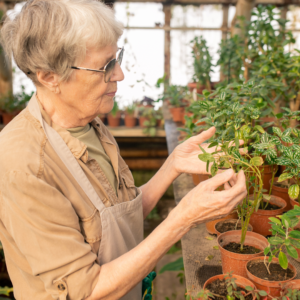
Plants need water. But did you know that not only too little, but too much water can be a problem?
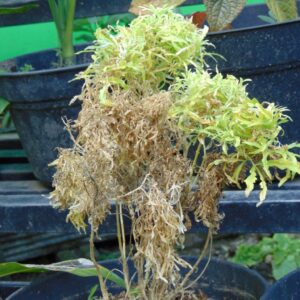 Underwatering
Underwatering
This is the number one reason we see new plants die. To be a gardener in Utah is to understand that, even with our sometimes very snowy winters, we live in a high desert. Very few plants can survive here without regular watering, and none will survive without establishment watering. (Learn more about establishment watering here.)
While there are a few times a year where we can rely on rain/snow to properly saturate the soil, it is not consistent nor reliable so for the most part, your plants will need watering assistance from you throughout the year. Yes, even in the winter!
Signs that you may be underwatering:
– your plant is wilting or looks like it is drying out
– you may notice burn spots on the leaves
– when you dig into the soil, it is extremely dry (pro-tip, take a long screwdriver and stick it into the soil near the root ball. If it goes in easily, the soil still has some moisture content, if it is difficult to push into the soil, the soil is dry and watering is needed.)
If you notice any of these, it is likely that your plant needs to be watered more regularly. Start with a good long soaking of the soil around the roots, and then adjust your regular watering protocol a bit until you see the plant return to its regular perky, happy, healthy color.
Overwatering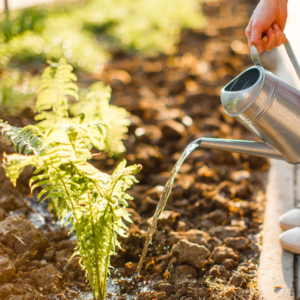
Experience teaches that the initial signs of overwatering can look very similar to underwatering. If the leaves of your plant are turning yellow or brown, check the soil to see how much moisture is being held.
One thing that is not commonly know, roots need oxygen as much as they need water. The best watering practice will allow air exchange between waterings. If there is too much water around the roots, without the needed air exchange, the roots will start to rot. To fix this scenario, stop watering ASAP and let the soil dry out. That being said, this situation can be tricky to strike the perfect balance as there are some plants that really need extra water when they are first setting roots, like Willows, Spiraea, Barberry, Arborvitae, etc..
We recommend doing a bit of research on your plant to know what its exact watering preferences are, or feel free to give us a call or send an email. Alternatively, snap a photo and send it to the team here at Glover Nursery. We’re happy to help you diagnose your plant’s issues and get it back to health. You can submit an inquiry via our website plant diagnosis form here.
Remove Dead Leaves/Branches 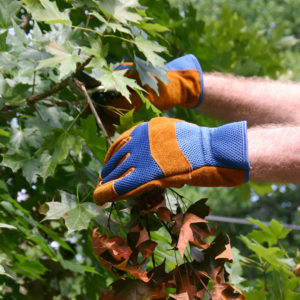
In order to let the plant focus on new growth, remove any dead leaves, dead flowers or dead / broken branches. You can use a pair of pruners, or even scissors, to cut away any dead material. Every plant has it’s perfect season for heavy pruning, but cleaning up the dead material can happen any time.
Consider the Lighting
Different plants need different amounts of light – some plants prefer significant exposure to direct sunlight while others require shade. Make sure you know which your plant prefers and plant it accordingly. If a plant is getting too much or not enough sunlight, it could contribute to its decline. Adjusting sun exposure can make all the difference!
Feed It Additional Nutrients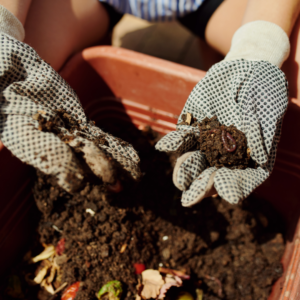
Maybe your plant is malnourished and not getting all of the nutrients it needs. You can remedy this using fertilizer, soil amendment or even compost. Signs of a malnourished plant include weak stems and discolored leaves. If you aren’t sure what to use, come and talk with our team. We can help you narrow down the best fertilizer for your specific plants needs.
When all else fails…Look for Signs of Life
Check your plant for any hint of green – even if your plant is completely brown, it may still be alive! Lots of plants go dormant as a normal part of their process, so don’t fret just yet. If you can’t find any sign of life in the leaves or stems, see if you can check the roots. The roots are the plant’s support system and can provide plenty of insight into the health of your plant. If the roots are plump and tan (or they could be white), they are likely getting enough water and nutrients to keep the plant going. If the roots are healthy, you are back in business. Your next step is figuring out what is going wrong. You can submit a photo to the experts here at Glover Nursery and we’ll help you diagnose your plant and get it back on the road to health.
The best way to bring your plant back to life is to go through these steps slowly. Too many changes at once could overwhelm your plant. Once you’ve figured out the problem, stick with those habits to ensure your plant lives a long happy life. If you have any questions about being your plants superhero or need help figuring out how to care for your plant, you can ask our plant diagnosis team.

